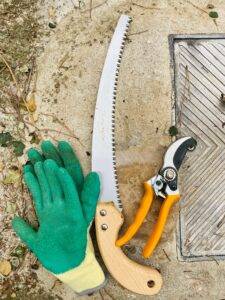In the UK we have a variety of roses grown such as the Hybrid tea roses. These are popular for their large, high- centred blooms and strong fragrance. They are often grown as cut flowers. Other veracity includes Floribunda which produces clusters of smaller blooms in a wide range of colours. They are hardy and easy to grow, making them popular for garden beds and borders and climbing roses. These are trained to grow up trellises, walls, and fences, and can produce large, fragrant blooms.
centred blooms and strong fragrance. They are often grown as cut flowers. Other veracity includes Floribunda which produces clusters of smaller blooms in a wide range of colours. They are hardy and easy to grow, making them popular for garden beds and borders and climbing roses. These are trained to grow up trellises, walls, and fences, and can produce large, fragrant blooms.
English roses are a type of shrub rose that is known for their strong fragrance and old-fashioned appearance and patio roses are small, compact roses that are perfect for growing in pots or containers on patios and balconies.
Rugosa roses are hardy, disease-resistant roses that are popular for their large, colourful blooms and attractive foliage Wild roses There are several species of wild roses that are native to the UK, including the dog rose (Rosa canina) and the field rose (Rosa arvensis). These roses have simple, single blooms and are often used in hedgerows and wild gardens.
There are many more varieties of roses grown in the UK, but these are some of the most common.
Some varieties are better suited to the cold damp conditions we often get in the UK such as Rugosa roses: These are extremely hardy and can tolerate  cold temperatures and damp conditions. They are also resistant to disease and pests.
cold temperatures and damp conditions. They are also resistant to disease and pests.
Hybrid musk roses are a cross between hybrid teas and musk roses and are known for their hardiness and disease resistance. They can also tolerate damp conditions.
Alba roses are a type of old garden rose that is well-suited to colder climates. They are known for their strong fragrance and delicate, pastel-coloured blooms.
Damask roses are another type of old garden rose that can tolerate cold temperatures and damp conditions. They are known for their strong fragrance and beautiful, double blooms.
Scots roses are wild rose species that are native to Scotland and can tolerate cold temperatures and damp conditions. They are also resistant to disease and pests.
When selecting roses for colder, damper climates, it’s important to look for varieties that are disease-resistant and can tolerate moist conditions. Proper site selection, soil preparation, and care can also help roses thrive in cold, damp climates. Roses were introduced to the UK from other parts of the world, including Asia and Europe, and have been cultivated and bred for centuries. The only exception would be wild roses such as the dog rose (Rosa canina) and the field rose (Rosa arvensis), which are native to the UK and can be found growing in the wild. However, many of the cultivated varieties of roses that are grown in the UK today have been bred for their adaptability to the UK climate, including cold and damp conditions.
Roses have a long history of being used for medicinal purposes, and various parts of the plant have been used in traditional medicine around the world. Here are a few examples:
- Rosehips: The fruit of the rose plant, known as rosehips, is a rich source of vitamin C and is often used in herbal remedies to boost the immune system and prevent colds and flu.
- Rose water: A distilled water made from rose petals, rose water has been used in traditional medicine for its anti-inflammatory properties and as a natural toner for the skin.
- Rose essential oil: The oil extracted from rose petals is often used in aromatherapy to promote relaxation and reduce stress. It is also believed to have anti-inflammatory and anti-anxiety properties.
- Rose tea: Made from dried rose petals, rose tea is used in traditional medicine for its calming properties and to soothe sore throats and digestive issues.
- Rose petal paste: A paste made from crushed rose petals and water or oil is sometimes used topically to soothe skin irritations and reduce inflammation.
It’s important to note that while roses have been used for centuries for their medicinal properties, scientific research on their effectiveness and safety is still limited, and it’s always best to consult with a healthcare professional before using any herbal remedies or supplements.
The timing of pruning roses depends on the type of rose, as well as the climate and growing  conditions in your area. However, as a general rule of thumb, it’s best to prune roses in late winter or early spring, just before new growth begins. This helps to promote healthy growth and encourages the plant to produce more blooms.
conditions in your area. However, as a general rule of thumb, it’s best to prune roses in late winter or early spring, just before new growth begins. This helps to promote healthy growth and encourages the plant to produce more blooms.
Here are some guidelines for pruning different types of roses:
- Hybrid tea and floribunda roses: Prune these roses back to about half their height, leaving three to five strong stems. Remove any dead, damaged, or diseased wood and any thin, weak growth.
- Climbing roses: Prune these roses after they have finished blooming in the summer. Remove any dead, damaged, or diseased wood, and cut back the previous year’s growth to about two-thirds of its length.
- Shrub roses: Prune these roses lightly in the late winter or early spring, removing any dead or diseased wood and shaping the plant as needed. Avoid heavy pruning, as this can reduce flowering.
It’s important to use sharp, clean pruning shears and to make clean, angled cuts just above a leaf node. This helps to prevent damage to the plant and reduces the risk of disease.
The depth of pruning for roses depends on the type of rose, as well as its growth habit and age. As a general rule of thumb, when pruning roses, you should aim to remove about one-third of the plant’s overall growth.
Here are some guidelines for how deep to prune different types of roses:
- Hybrid tea and floribunda roses: These roses should be pruned back to about half their height, leaving three to five strong stems. Remove any dead, damaged, or diseased wood, as well as any thin, weak growth.
- Climbing roses: Prune these roses after they have finished blooming in the summer. Remove any dead, damaged, or diseased wood, and cut back the previous year’s growth to about two-thirds of its length.
- Shrub roses: Prune these roses lightly in the late winter or early spring, removing any dead or diseased wood and shaping the plant as needed. Avoid heavy pruning, as this can reduce flowering.
When pruning roses, it’s important to use sharp, clean pruning shears and to make clean, angled cuts just above a leaf node. This helps to prevent damage to the plant and reduces the risk of disease. If you are unsure about how much to prune your roses, it’s always best to err on the side of caution and prune lightly, as over-pruning can damage the plant and reduce flowering.
damage the plant and reduce flowering.
Deadheading and pruning roses after the flowers have faded is a good way to encourage the plant to produce new blooms. Deadheading involves removing the spent flowers from the plant, which helps to redirect the plant’s energy away from producing seeds and towards producing new growth and flowers. When deadheading roses, use sharp pruning shears to cut just above a healthy leaf node, about 1/4 inch above the node. This helps to promote new growth and encourages the plant to produce more flowers. Deadheading should be done regularly throughout the blooming season. Once the blooming season is over, you can prune your roses back to about one-third of their overall growth. This helps to promote healthy growth and encourages the plant to produce more flowers the following year. Prune any dead, damaged, or diseased wood, as well as any thin, weak growth.
Remember to always use sharp, clean pruning shears and to make clean, angled cuts just above a leaf node. This helps to prevent damage to the plant and reduces the risk of disease. By deadheading and pruning your roses regularly, you can help keep them healthy and encourage them to produce more beautiful blooms.
